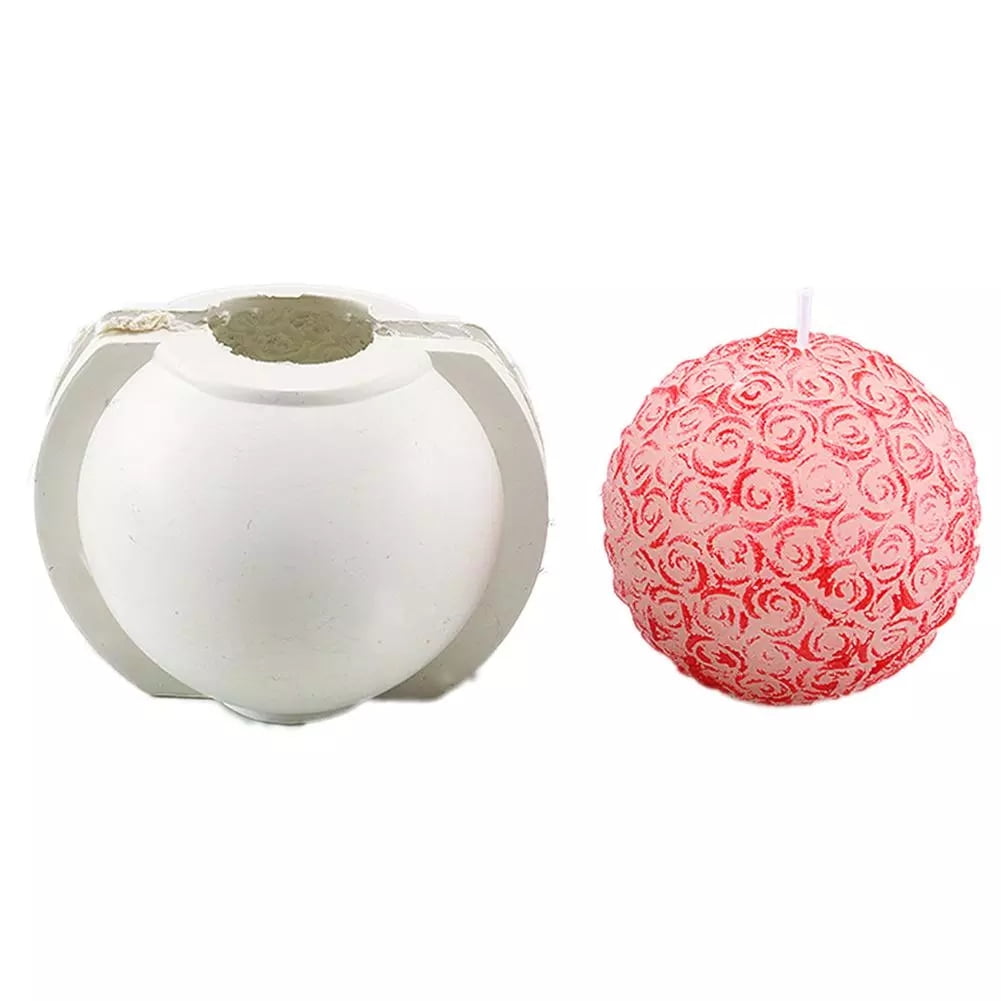The candle making industry has experienced a significant surge in popularity in recent years, as more and more individuals embrace the beauty and ambiance that candles can add to their homes. But beyond the aesthetic value, candle making is also proving to be an incredibly profitable venture for those who are willing to invest their time and creativity into it.
In this article, we will delve into the world of candle making and explore the potential profit margins that can be achieved in this lucrative business.
Candle making offers a unique opportunity for budding entrepreneurs and creative artisans alike. With minimal startup costs compared to other businesses, it is relatively easy for anyone with a passion for candles to enter this industry. However, before diving headfirst into the wax and wick, it is crucial to understand the fundamental costs involved in setting up a successful candle making venture.
Determining the right pricing strategy is another key aspect of maximizing profits in the candle making business. Understanding the market value for different types of candles, considering factors such as materials used and level of craftsmanship, plays a vital role in attracting customers while ensuring a healthy profit margin. By analyzing industry trends and consumer preferences, candle makers can set prices that strike a balance between affordability for customers and profitability for themselves.
Through this comprehensive exploration of the candle making industry, we will also uncover additional revenue streams beyond just direct sales. Diversifying income sources can greatly enhance profitability by offering complementary products or services related to candles. Additionally, we will delve into managing variable expenses effectively while maximizing profits, discuss effective marketing strategies to boost sales, address common challenges faced by candle makers, and showcase inspiring success stories from thriving artisans.
Whether you are already passionate about candle making or are considering venturing into this fragrant world of entrepreneurship, join us as we embark on this journey towards understanding just how profitable candle making can be.
The Fundamental Costs
When starting a candle making business, it is essential to understand and analyze the fundamental costs involved in setting up and running the operation. These initial investments will vary depending on factors such as the scale of production, the type of candles being made, and the equipment required. By carefully considering these costs, candle makers can make informed decisions that will ultimately impact their profitability.
One of the primary expenses to consider is the cost of raw materials. This includes wax, wicks, fragrance oils, dyes, and containers or molds for shaping the candles. It is important to research suppliers and compare prices to ensure you are getting the best quality materials at a reasonable cost. Additionally, keep in mind that different types of candles may require specific materials which could affect their pricing.
In addition to raw materials, equipment and tools are also necessary investments for candle making. This includes melting pots or double boilers for melting wax, thermometers for temperature control, molds or containers for shaping the candles, and packaging materials for presentation purposes. The cost of these items can vary significantly depending on their quality and functionality. It is crucial to assess your needs and preferences when purchasing equipment to strike a balance between affordability and efficiency.
To summarize:
- Raw material costs: Consider the price of wax, wicks, fragrance oils, dyes, containers or molds needed for each type of candle.
- Equipment expenses: Invest in quality tools such as melting pots or double boilers, thermometers, molds or containers for shaping candles.
- Packaging materials: Allocate a budget for presentation purposes.
By carefully analyzing these initial investments in terms of both quantity and quality required for your specific candle making business model, you can accurately determine your overall costs. This knowledge will allow you to set appropriate prices for your products while still ensuring profitability in the long run.
Unveiling the Pricing Strategy
Determining the right market value for your candles is a crucial part of creating a successful candle making business. Pricing your candles too high may result in low sales, while pricing them too low may lead to missed opportunities for higher profits. In this section, we will explore some key factors to consider when determining the pricing strategy for your candles.
Cost Analysis
Before setting a price for your candles, it is important to understand the fundamental costs involved in their production. Consider factors such as the cost of raw materials, packaging, labeling, and shipping. Additionally, factor in any overhead costs such as rent or utilities if you have a dedicated workspace or store. By analyzing these costs, you can determine the minimum price at which you need to sell your candles in order to cover expenses and make a profit.
Competitor Research
Researching your competitors is essential to understanding the market value of your candles. Take note of what other candle makers are charging for similar products in terms of size, quality, and design. This will give you an idea of the price range that customers are willing to pay. While it is important not to undersell yourself, pricing your candles significantly higher than similar offerings without substantial differentiation may result in lost sales.
Value Perception
Consider how customers perceive the value of your candles when setting their price. Factors such as unique scents, creative designs, and high-quality ingredients can justify a higher price point compared to more basic candles. Experiment with different prices and gather feedback from customers to determine their perception of the value you offer.
By carefully considering cost analysis, competitor research, and value perception, you can determine an appropriate market value for your candles that allows you to maximize profitability while remaining competitive in the market. Remember that pricing strategies may need adjustments over time based on changes in costs or customer demand.
The ROI Revolution
Return on investment (ROI) is a crucial metric for any business, including candle making. It measures the profitability of an investment compared to its cost and can be a key factor in determining the success of your candle making venture. In this section, we will delve into the concept of ROI in candle making and explore how it can help you make informed decisions to maximize profits.
To calculate ROI in candle making, you need to consider both the initial investments and the ongoing expenses. The initial investments include costs such as purchasing raw materials, equipment, molds, packaging materials, and marketing materials. These are one-time expenses that impact your profit margins at the beginning of your business journey.
On the other hand, ongoing expenses include variable costs like utility bills, wages for employees (if applicable), transportation costs, and marketing expenses. These expenses are incurred regularly and must be factored into calculating ROI over time.
Once you have analyzed your initial investments and ongoing expenses, you can calculate the ROI by subtracting the total cost from total revenue generated and dividing it by the total cost. The resulting percentage will indicate how much profit you are making for every dollar invested. A higher ROI indicates greater profitability.
Tracking your ROI regularly allows you to assess the effectiveness of your business strategies and make adjustments as needed. It helps identify areas where costs can be minimized or reallocated to increase profitability. By understanding your ROI, you can make informed decisions on pricing strategies, marketing efforts, and resource allocation to optimize returns on your investment in candle making.
| Initial Investments | $5,000 |
|---|---|
| Ongoing Expenses/year | $2,000 |
| Total Revenue Generated/year | $10,000 |
| ROI (%) | 150% |
Calculating the Profit Margins
One of the key factors in determining the success and profitability of a candle making business is understanding the profit margins. Profit margins refer to the difference between the cost of producing a candle and its selling price. By accurately calculating profit margins, candle makers can gain insights into their financial performance and make informed decisions about pricing, production costs, and overall business strategies.
To calculate the profit margin, one must first determine the total cost of producing each candle. This includes all direct costs, such as wax, wicks, fragrance oils, containers, and packaging materials. Additionally, indirect costs such as labor, overhead expenses (rent, utilities), marketing expenses should also be taken into consideration.
Once the total cost per candle is calculated, it is crucial to establish an appropriate selling price that not only covers production costs but also generates a profit. Determining this selling price requires market research to understand customer preferences and purchasing patterns. It is essential to strike a balance between affordability for customers and profitability for the business.
| Cost Components | Amount (per candle) |
|---|---|
| Direct Costs | $2.50 |
| Indirect Costs | $1.00 |
| Total Cost per Candle | $3.50 |
Let’s assume that based on market research, a competitive selling price for this type of candle is $8. With this information at hand:
- Profit per Candle: $8 – $3.50 = $4.50
- Profit Margin: ($4.50 / $8) x 100% = 56.25%
In this example, the profit margin is 56.25%. It means that for every candle sold, the business makes a profit of $4.50, which accounts for 56.25% of the selling price.
Understanding profit margins helps candle makers evaluate their pricing strategy and profitability. By regularly analyzing and adjusting these numbers, they can make informed decisions to optimize profits and ensure the financial sustainability of their candle making business.
Beyond Sales
Candle making can be a highly profitable business venture, and one way to maximize your earnings is by exploring additional revenue streams within the industry. While selling candles directly to customers is the primary source of income for most candle makers, there are several other avenues to consider that can help boost your profits.
One potential revenue stream is offering candle making classes or workshops. Many people are interested in learning how to make their own candles, and by offering classes, you can not only generate additional income but also establish yourself as an expert in the field.
These classes can be held at your own studio or shop, or even online through video tutorials. You can charge a fee for participation and also sell candle making kits or supplies to participants, further increasing your earnings.
Another way to create additional revenue is by selling complementary products alongside your candles. For example, you could offer candle accessories such as holders, snuffers, or decorative materials like ribbons and charms. By providing a range of products that enhance the overall experience of using your candles, you can increase the average transaction value per customer.
Collaborating with other businesses is yet another opportunity for additional revenue in the candle making industry. Partnering with local spas, hotels, or event planners to supply them with customized candles for their clients or events can result in large orders and consistent income. Additionally, you can explore wholesale opportunities by selling your candles to retail stores or online marketplaces like Etsy.
By diversifying your income streams in this way, you not only increase your chances of profitability but also adapt to changing market demands and consumer preferences. It’s important to continue researching new trends and exploring innovative ways to expand your business beyond just selling candles.
| Additional Revenue Streams | Potential Earnings |
|---|---|
| Candle Making Classes | Varies based on class fees and number of participants |
| Candle Accessories | Increases average transaction value per customer |
| B2B Collaborations | Consistent income through large orders or wholesale opportunities |
Navigating Variable Expenses
As with any business, candle making comes with its fair share of variable expenses that can have a significant impact on profitability. Successful candle makers understand the importance of effectively managing these fluctuating costs while finding ways to maximize profits. In this section, we will explore some strategies and tips for navigating variable expenses in the candle making industry.
Sourcing Materials and Supplies
One of the major variable expenses in candle making is the cost of materials and supplies. As the prices of raw materials such as wax, wicks, fragrance oils, and containers can fluctuate over time, it is essential to establish reliable suppliers and monitor market trends. Building strong relationships with suppliers can sometimes lead to bulk discounts or preferential pricing arrangements.
Additionally, considering alternative sourcing options can help manage costs. For example, exploring local suppliers or participating in group purchasing with other candle makers may result in more competitive prices. It’s also worth investigating if there are any opportunities to purchase materials in bulk or during promotional sales events.
Efficient Production Process
Another way to navigate variable expenses is by optimizing the candle production process for efficiency. Streamlining operations can help reduce labor costs and minimize wastage of materials. Consider conducting regular assessments of the production line to identify areas that need improvement or automation.
Investing in modern equipment or technology that improves efficiency may involve an initial cost but can lead to long-term savings. For example, automated pouring machines or temperature-controlled melting systems could increase productivity while reducing material waste.
Effective Inventory Management
Proper inventory management is crucial for cost control and maximizing profits in candle making. By keeping track of stock levels and accurately forecasting demand trends, you can avoid overstocking on materials that may become obsolete or incur storage costs.
Implementing an inventory management system with real-time data tracking can help monitor inventory levels, track sales patterns, and streamline reordering processes. This ensures that you have the right amount of supplies on hand to meet customer demand without tying up unnecessary working capital.
Navigating variable expenses is a critical aspect of running a profitable candle making business. By carefully managing materials sourcing, optimizing production processes, and implementing effective inventory management systems, candle makers can minimize costs while maximizing profits.
The Power of Marketing
Marketing plays a crucial role in boosting candle sales and increasing profitability. In this section, we will explore various tips and strategies that candle makers can use to effectively market their products and attract more customers.
- Identify your target audience: Before you start marketing your candles, it’s important to identify your target audience. This will help you tailor your marketing efforts towards the right group of people who are more likely to be interested in purchasing your candles. Consider factors such as age, gender, lifestyle, and preferences when defining your target audience.
- Build a strong brand: Creating a strong brand identity is essential for standing out in the competitive candle making industry. Develop a unique brand story and design a visually appealing logo that reflects the essence of your candles. Consistency across all marketing materials and platforms will help establish recognition and trust among customers.
- Utilize social media platforms: Social media has become a powerful tool for marketing products. Create accounts on popular platforms like Instagram, Facebook, and Pinterest to showcase beautiful images of your candles, share behind-the-scenes content, and engage with potential customers. Use relevant hashtags, collaborate with influencers or bloggers in the home decor or lifestyle niche, and run targeted ads to reach a wider audience.
- Leverage content marketing: Content marketing involves creating valuable content that not only promotes your candles but also provides value to potential customers. Start a blog on your website where you can share informative articles about candle care tips, DIY candle projects, or even the benefits of using certain scents for relaxation or ambiance purposes. This approach can help establish authority in the industry and build trust with consumers.
- Offer promotions and discounts: Everyone loves getting a good deal, so consider offering promotions or discounts to attract new customers and encourage repeat business. For example, you could offer discounts for bulk orders or create limited-time offers during special occasions like holidays or seasonal events.
Using these tips and strategies can help candle makers effectively market their products, attract more customers, and ultimately boost candle sales and profitability. By understanding the power of marketing and implementing these strategies, candle makers can elevate their business to new heights in the competitive market.
Addressing Common Challenges
Managing Competition: Standing Out in a Saturated Market
In the candle making industry, competition can be fierce due to the relatively low barriers to entry. This means that candle makers often find themselves faced with the challenge of standing out in a saturated market. To address this challenge and enhance profitability, it is crucial to develop a unique selling proposition (USP) that sets your candles apart from the competition.
One effective strategy is to focus on niche markets and create candles tailored to specific customer segments. For example, you could specialize in eco-friendly candles made from sustainable materials, or target luxury markets by using premium ingredients and sophisticated packaging. By identifying and catering to a specialized audience, you can differentiate your brand and develop a loyal customer base.
Additionally, investing in branding and marketing can help elevate your candles above the competition. Develop a compelling brand story and visual identity that resonates with your target market. Use social media, online platforms, and collaborations with influencers to increase visibility and reach new customers.
Quality Control: Consistently Producing High-Quality Candles
Maintaining consistent quality is essential for building trust with customers and ensuring repeat purchases. This requires implementing proper quality control measures throughout the candle making process.
Start by sourcing high-quality materials and ingredients to ensure your candles are made to last. Regularly test different waxes, fragrances, dyes, and wicks to determine which combinations produce superior results.
Standardize your production process by documenting each step and maintaining detailed records of ingredient measurements, melting temperatures, pour depths, curing times, etc. This will help identify any issues or inconsistencies in production.
Regularly inspect finished candles for any defects such as uneven burning or poor scent throw. Seek feedback from customers through surveys or reviews to identify areas for improvement.
By consistently producing high-quality candles, you can enhance customer satisfaction and loyalty, ultimately boosting your profitability.
Rising Costs: Smart Strategies for Cost Control
As with any business, rising costs can eat into your profits. To overcome this challenge and maintain enhanced profitability, it is crucial to implement smart strategies for cost control.
Consider bulk purchasing of materials to take advantage of economies of scale. By negotiating discounts with suppliers or joining co-ops with other candle makers, you can reduce procurement costs significantly.
Evaluate your production process for efficiency improvements. Look for ways to minimize waste, optimize workflow, and streamline operations. This might include investing in machinery or technology that can automate certain tasks and reduce labor expenses in the long term.
Furthermore, regularly review your pricing strategy to ensure it aligns with current market conditions. It may be necessary to periodically adjust prices to account for changes in material costs or competition.
By proactively managing costs and making strategic decisions regarding pricing, you can navigate fluctuating expenses while maximizing profits in the candle making business.
Success Stories
As the candle making industry continues to grow, there are numerous success stories of individuals who have thrived in this lucrative business. These inspiring examples prove that with the right strategies and dedication, candle makers can achieve substantial profits and long-term success.
Building a Strong Brand
One key factor that sets apart successful candle makers is their ability to create a strong brand identity. By establishing a unique and recognizable brand, these entrepreneurs are able to attract a loyal customer base and differentiate themselves from competitors. They focus on creating high-quality products that reflect their brand values and resonate with their target market.
Targeting Niche Markets
Instead of trying to appeal to a wide audience, many successful candle makers have found success by targeting specific niche markets. By understanding the preferences and needs of these niche markets, they are able to tailor their candles accordingly and offer unique scents or designs that cater specifically to the desires of their customers. This targeted approach helps them stand out in a crowded market and build a dedicated following.
Effective Online Presence
In today’s digital age, having an effective online presence is essential for any successful business, including candle making. Successful candle makers leverage social media platforms, such as Instagram or Pinterest, to showcase their products and connect with potential customers. They use compelling visuals and engaging content to generate interest in their candles and drive sales. Additionally, they maintain an informative website where customers can easily access product information, place orders, and get inspired by creative ideas for using candles.
These success stories serve as powerful inspirations for aspiring candle makers looking to enter the industry. By studying the strategies employed by these thriving entrepreneurs, aspiring candle makers can gain valuable insights into how to build a profitable business in this ever-growing industry.
Conclusion
In conclusion, the candle making industry has proven to be a profitable venture for many entrepreneurs. Through careful analysis of the fundamental costs, a well-thought-out pricing strategy, and understanding the return on investment, candle makers can determine their profit margins and ensure financial success. Additionally, exploring additional revenue streams and effectively managing variable expenses contribute to maximizing profits.
One key aspect of achieving profitability in candle making is effective marketing. By implementing strategic marketing techniques and utilizing various platforms to reach potential customers, candle makers can boost sales and increase their customer base. This includes using social media platforms, crafting engaging product descriptions, and collaborating with influencers or retailers to promote their candles.
Moreover, addressing common challenges faced by candle makers is crucial for enhanced profitability. Overcoming obstacles such as competition, seasonal fluctuations in demand, or limited resources requires innovation and adaptability. Successful candle makers have demonstrated resilience in the face of these challenges by differentiating themselves through unique scents or designs, creating limited edition releases for special occasions, or exploring niche markets.
Finally, success stories within the candle making industry serve as inspiring examples of what is possible in terms of profitability. Through dedication, creativity, and hard work, many individuals have turned their passion for candles into thriving businesses that generate not only financial success but also personal fulfillment. With careful planning and strategic decision-making, anyone with a love for candles can find success in this lucrative industry.
In summary, while candle making does require initial investments and careful budgeting to manage variable expenses effectively, it is indeed a profitable business opportunity. By following the steps outlined above and learning from successful entrepreneurs in the industry, one can harness the sweet scent of success in the world of candle making.
Frequently Asked Questions
How profitable is making candles?
The profitability of making candles can vary depending on various factors such as the cost of materials, production efficiency, pricing strategy, and market demand. Candles can be a profitable business if the production costs are managed effectively and there is a steady demand for unique or high-quality candles.
Additionally, offering specialty candles or personalized options can attract customers willing to pay a premium price. However, it’s important to consider overhead expenses like packaging, marketing, and distribution that can impact the overall profitability.
Is homemade candle a good business?
Starting a homemade candle business can be a promising venture for several reasons. Firstly, it allows individuals to creatively express themselves by crafting unique candle designs, scents, and even incorporating sustainable or organic materials.
Secondly, the overhead costs compared to larger-scale candle manufacturers are typically lower since homemade businesses often operate from home or small studios. Additionally, the ability to control product quality and rely on word-of-mouth marketing through satisfied customers can help establish a strong brand reputation.
Do homemade candles sell well?
Homemade candles have the potential to sell well if they meet certain criteria and are marketed effectively. The success of selling homemade candles depends on factors such as quality craftsmanship, appealing aesthetics, competitive pricing strategies, effective branding and packaging, distribution channels (online platforms or local stores), targeted marketing efforts via social media or craft fairs/festivals/events where prospective customers can experience the products firsthand.
Building a loyal customer base through excellent customer service and delivering consistent quality will also contribute to increased sales over time. However it’s important to keep in mind that market demand and competition should also be considered when determining the potential success of homemade candle sales.

Welcome to my candle making blog! In this blog, I will be sharing my tips and tricks for making candles. I will also be sharing some of my favorite recipes.





